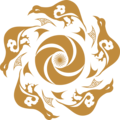TRADITIONAL UZBEK COSTUME ON THE MATERIALS OF MUSEUM AND PRIVATE COLLECTIONS OF UZBEKISTAN (PART 2)
Description
The second part of the book-album Traditional Uzbek Costume on Materials of Museum and Private Collections of Uzbekistan is dedicated to men's and women's clothing worn in Surkhandarya, Kashkadarya, Khorezm and Karakalpakstan. The catalog presents the best examples of costumes and accessories from various national museum and private collections. After reading the volume, you can find out what kind of dress was the Karakalpak unique blue kok koilek for wedding ceremonies, what jewelry was to be worn with it, how turme kerchiefs for Karakalpak girls were tied and so on. A significant part of the materials in the volume tells about the fashion history, production and wearing culture of traditional clothes in those regions of Uzbekistan traditionally dominated by livestock breeding people. At the same time, the book-album pays some attention to the fashion of cities, such as Shakhrisabz, the well-known center for the production of various textiles.

